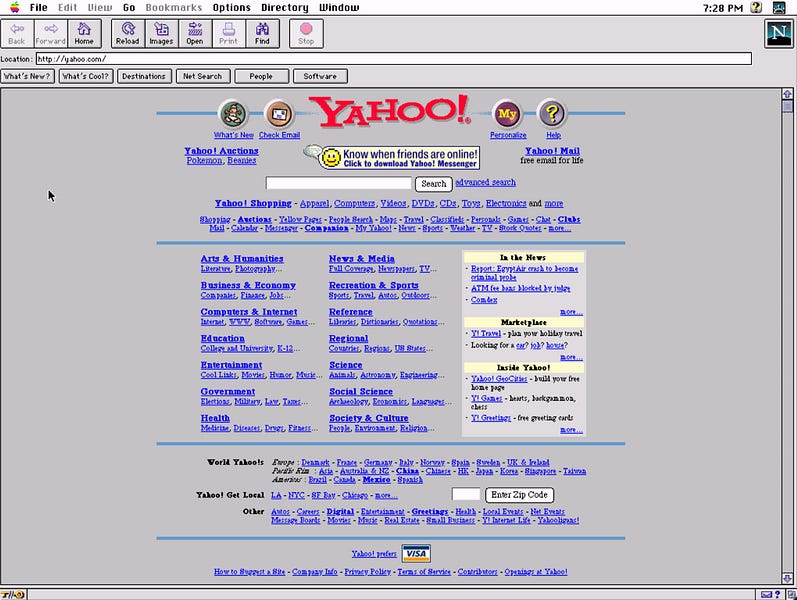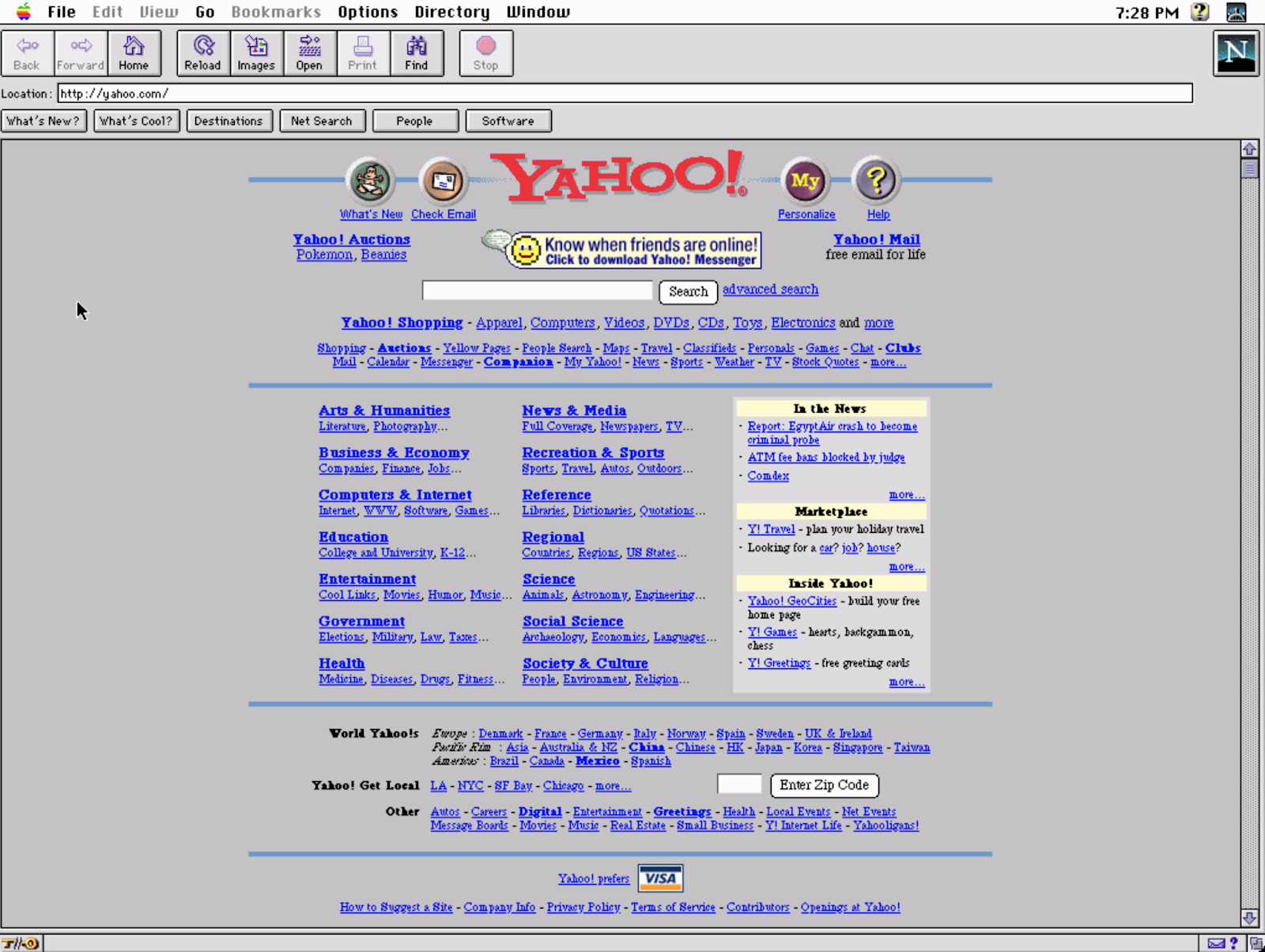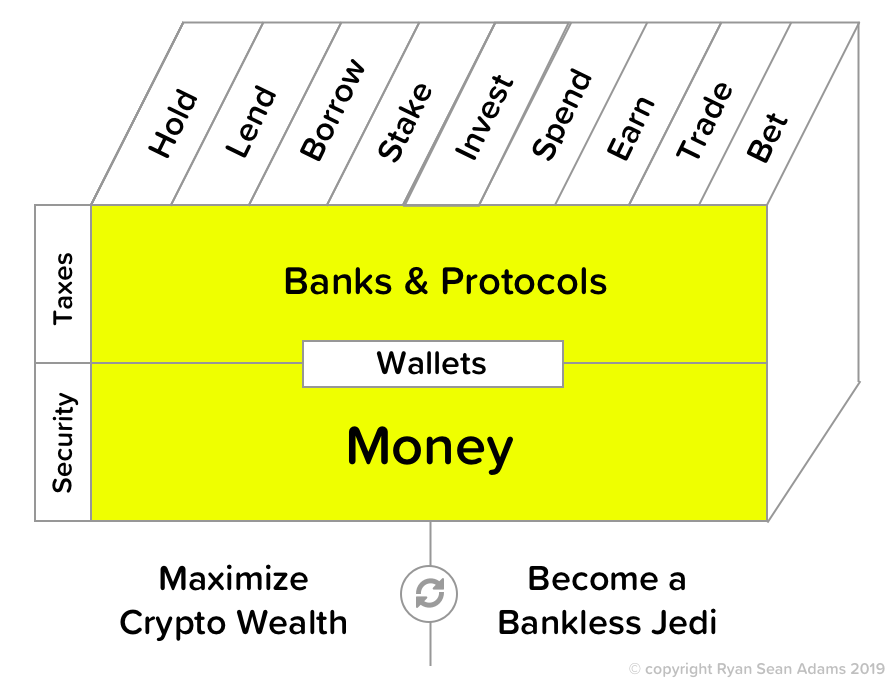The Power of Permissionless Platforms

 Cartesi - Build app-specific rollups with Web2 tooling!
Cartesi - Build app-specific rollups with Web2 tooling!
Level up your open finance game three times a week. Subscribe to the Bankless program below.
Dear Crypto Natives,
Without their permission. One of the reddit co-founders wrote a book about it.
He and a buddy launched what’s now one of the top 5 websites from a college dorm room. How? Permissionless protocols.
The torrent of innovation—the rise and fall of industries—the changes to every facet of life as we know it over the past 30 years—only possible due a handful of permissionless internet protocols.
The reason I know crypto will disrupt traditional finance is because our system is permissionless and theirs isn’t.
How many times do we have to see this play out to stop doubting?
The media companies…
The record labels…
The retail giants…
A few hundred banking executives can’t win against a few million engineers.
Banks are next.
I’ve asked Ben DiFrancesco to remind us of this in today’s thought-piece. We constantly underestimate the power of permissionless but it’s crypto’s greatest superpower.
- RSA
THURSDAY THOUGHT
The Power of Permissionless Platforms
Post by: Ben DiFrancesco, founder of ScopeLift & writer at Build Blockchain newsletter
Have you heard of “suitcase words” before? The term, coined by Marvin Minksy, refers to words that contain a large variety of meanings packed into them. Examples include “consciousness” and “morality.”
In the crypto world, “decentralization” is definitely a suitcase word. It carries a lot. In fact, I’d argue it’s quite overstuffed.
Let’s unpack just one of the many meanings currently crammed in the decentralization suitcase: permissionlessness. In particular, let’s focus on permissionless developer platforms and why they spur innovation.
Power and Permissionlessness
Before we dive into permissionlessness, let’s take a minute to remember why we care about decentralization in the first place. From a high level, decentralization is about dispersing power. This begs the question: why do we care about dispersing power?
For one, centralized power is dangerous. You don’t have to go very far back in history to find examples of too much power—in too few hands—leading to bad outcomes. This is the idea behind representative democracy: checks and balances, combined with accountability to voters, constrain the power of our leaders so as to avoid the rise of tyrants.
There’s a second reason, though, for desiring disempowerment. It’s more subtle and less intuitive. Centralized power, even when in the hands of intelligent and well intentioned people, is much less inventive than decentralized, bottom-up experimentation.
This is why market based economies flourish, despite seeming chaotic and haphazard, while command and control economies have all failed spectacularly, despite their seeming advantage in top down efficiency. In the long run, it turns out, inventiveness trumps everything else.
This is where permissionlessness comes in. Put simply, permissionless systems are those that lack gatekeepers. They are credibly neutral. They allow anyone to build on them, no matter how crazy their idea might seem. And they spur innovation, because they allow creative people to invent things we didn’t even know we wanted, and never would have known to ask for.
Developer Platforms: Compose, Stack, Abstract
Now that we’ve covered where permissionless fits inside the “decentralization” suitcase, let’s review what a “platform” is in the context of computing.
Building software is as close to an act of pure creation as mere humans can experience. The computer is a blank slate. With enough time and energy, it can be programmed to do (almost) anything you can imagine.
Of course, while it’s theoretically possible to make just about anything, there are limitations to what any one person, team, or company can create. Throughout the history of computing, so-called “platforms” have enabled innovation by providing a common foundation on top of which many developers can build. A noteworthy aspect of these platforms is that they stack and compose with one another, and tend to abstract away the layers below.
The x86 CPU architecture is a very low level computing platform. It provides instructions for performing computations that map directly to the silicon on which those computations will be done. On top of x86, operating systems like Windows, Linux, and macOS were built, along with higher level programming languages, like C and C++.
On top of those OS platforms, and using those higher level languages, countless applications were created. Some of those apps even became platforms in their own right. Microsoft Excel is a good example of an app as a platform.
Protocols were also implemented on top of those operating systems, and some of those protocols became platforms too. The internet is the preeminent example of a protocol platform.
On top of all these, the browser was built. Leveraging both the application frameworks of the underlying operating systems, and the internet protocol they had all come to support, it abstracted away both, providing developers an environment in which to deliver content and build new kinds of software.
The Browser: A Permissionless Developer Platform
Early web browsers were extremely rudimentary. The nascent web seemed like a toy. It was so limited that Microsoft, by far the most dominant technology company in the world at the time, mostly ignored it for years, leaving upstart browser makers like Netscape to expand.

(Above: Netscape Navigator browser circa 1999, via oldweb.today)
Despite its constraints, the browser unleashed a wave of creativity unparalleled in computing before then, and arguably since. Why? The browser, for all its limitations, was a permissionless platform. It gave developers and entrepreneurs free reign to invent. And invent they did.
The early web was awash in seemingly crazy experiments. Most of them failed, but some of them succeeded spectacularly. Many of the applications we now take for granted were scoffed at by mainstream commentators in the early days. In the wild west of the world wide web, people built what they were passionate about.
The good ideas emerged and evolved, bubbling up to the surface. Blogs, chats, social networks, wikis, crowd-sourced rating systems, online dating sites, and much more. None of these would exist today had they required the blessing of a "serious" businessperson.
Cryptonetworks: Permissionless Platforms For Permissionless Platforms
This brings us to crypto, and specifically to decentralized cryptonetworks with support for robust smart contracts. They are the most powerful permissionless computing platforms built since the dawn of the web. They’re still embryonic, but in the long run, their impact will be no less significant.
In fact, there’s a chance that digital scarcity, unstoppable code, and immutable data—the new primitives decentralized cryptonetworks put in developers’ hands—may end up being even more impactful than the web itself. Here’s why.
Smart contracting cryptonetworks aren’t just powerful permissionless platforms. They’re permissionless platforms for building permissionless platforms. Today, there’s no better example of this dynamic than the DeFi ecosystem emerging on the Ethereum network.
As a permissionless platform, Ethereum provides a foundation on which no one can stop you from building your crazy idea. And a lot of crazy-cool ideas have already been built.

(Above: Image used with permission via @TrustlessState)
“An over collateralized lending network that mints a fungible stablecoin for its payouts.” Why not? That’s MakerDAO and Dai.
“An unstoppable, algorithmic exchange for seamlessly swapping any two tokens.” Sure! Uniswap.
“A collateralized, distributed lending platform where you can send, spend, and reclaim fractions of your loan at any time.” Sounds neat! That’s Compound.
The list goes on. Each of these applications is compelling in its own right, but here’s what makes this really powerful: they’re all also permissionless platforms in and of themselves. Each gives developers new foundations on top of which to build even more new things.
Permissionless By Default
Earlier, we discussed how developer platforms stack, compose, and abstract with one another. We did so in the context of architectures, operating systems, programming languages, and communication protocols. This culminated with the creation of the web, but it happened on the web too, especially with APIs (Application Programmer Interfaces).
By exposing public APIs, web platforms—like Facebook, Stripe, or Google Maps, just to name a few—enabled developers to mix and match capabilities and build new things. But traditional web APIs are de facto permissioned. They’re controlled by the company that creates them, and as a 3rd party developer, you’re at the mercy of their needs to monetize.
Many great ideas were squashed by the tech giants who own the web’s most powerful platforms. There’s even a term for this: it’s called platform risk.
By contrast, smart contract based applications are de facto permissionless. Every smart contract application exposes an on-chain API which any other smart contract or frontend can utilize.
Want to build a dApp that leverages Uniswap’s token swapping abilities in a clever way? Go ahead. Not only do you not have to ask permission, there’s nothing the creators of Uniswap can possibly do to stop you. In turn, whatever you build with Uniswap will be a tool in the next developer’s toolbelt. It’s platforms all the way down.
Tinkering Towards The Future
Sometime in the next few years, some kid tinkering with smart contracts in their dorm room or parent’s basement is going to build something that ends up changing the world. The idea will seem like a toy at first and will be dismissed as useless by most. In hindsight, we’ll all pretend it was obvious.
What will make this possible? The permissionless nature of decentralized cryptonetworks, along with the compounding effects of countless other permissionless protocols built on top.
The decentralization suitcase carries many concepts. Permissionlessness, and the inventive experimentation it enables, is not often emphasized. It may turn out to be the ecosystem’s most important property.
Action steps
- Which crypto protocols allow the highest degrees of permissionless innovation?
Author Blub
Ben DiFrancesco is a software engineer and entrepreneur from Philadelphia, PA. He runs a consultancy called ScopeLift, which focuses on building high caliber software in the crypto ecosystem. He also co-organizes the Philly Blockchain Tech meetup, and writes Build Blockchain which is one of my favorite weekly newsletters (solid tech biased perspective).
Subscribe to the Bankless program. $12 per mo. Includes Inner Circle & Deal Sheet.
Filling out the skill cube
The crypto money stack doesn’t require permission to build on or to use. The incumbents always underestimate of permissionlessness. Not us! We’re leveling up.

👉Send us a tip for today’s issue (rsa.eth)
Not financial or tax advice. This newsletter is strictly educational and is not investment advice or a solicitation to buy or sell any assets or to make any financial decisions. This newsletter is not tax advice. Talk to your accountant. Do your own research.
Disclosure. From time-to-time I may add links in this newsletter to products I use. I may receive commission if you make a purchase through one of these links. I’ll always disclose when this is the case.
 Ryan Sean Adams
Ryan Sean Adams 



